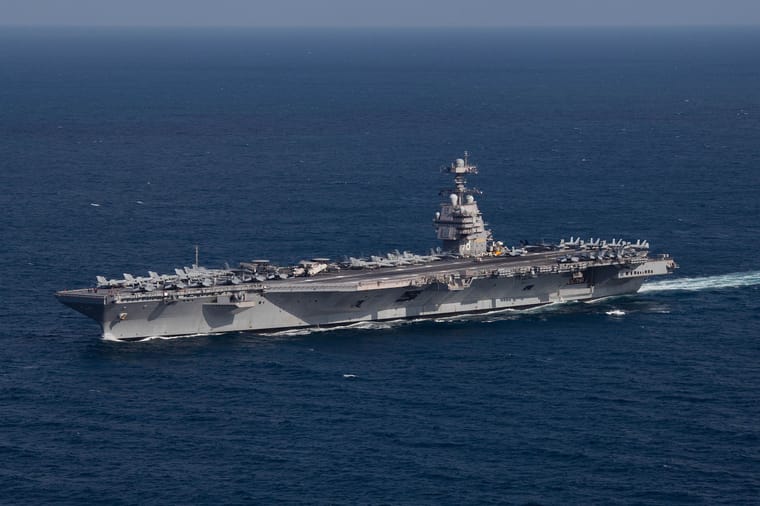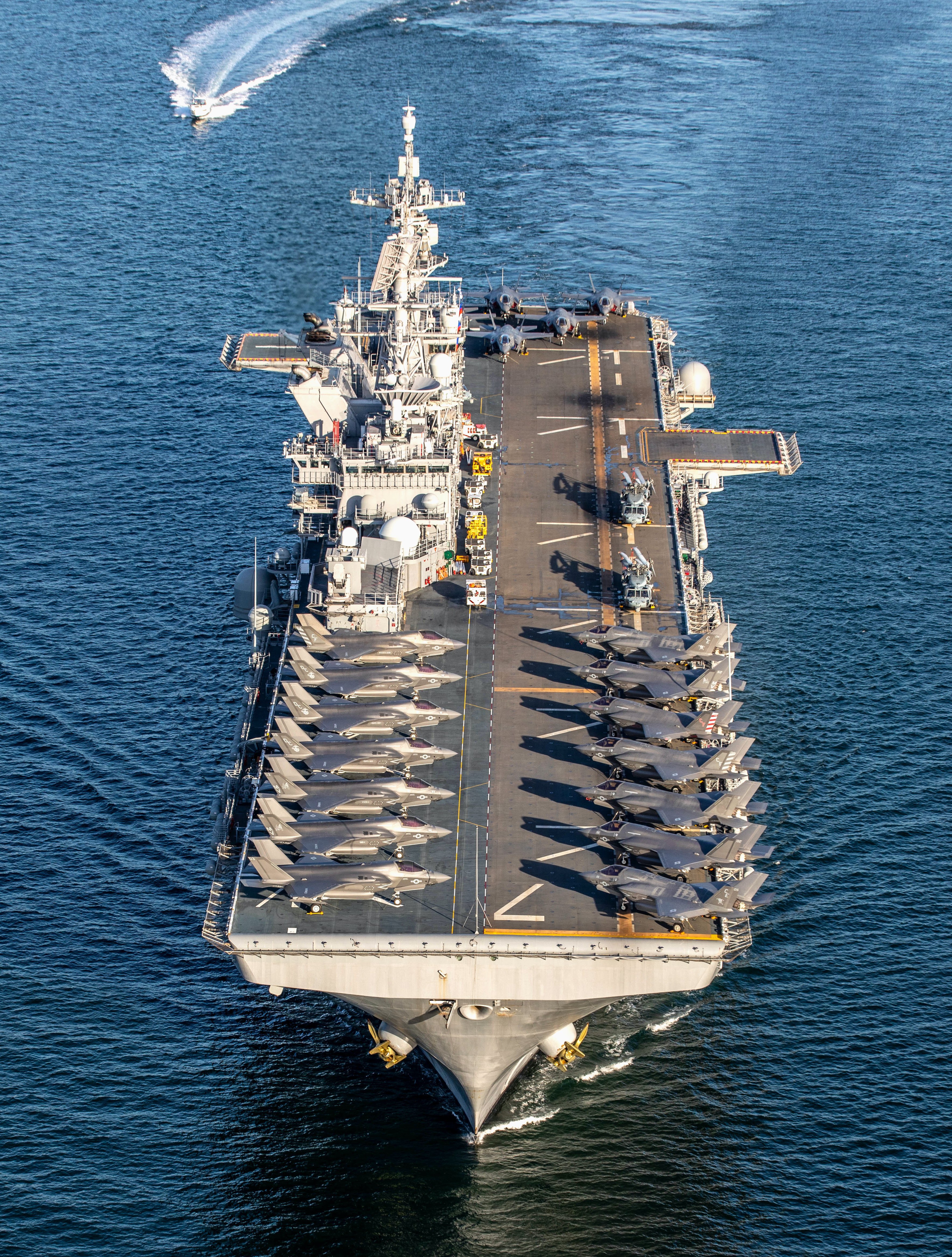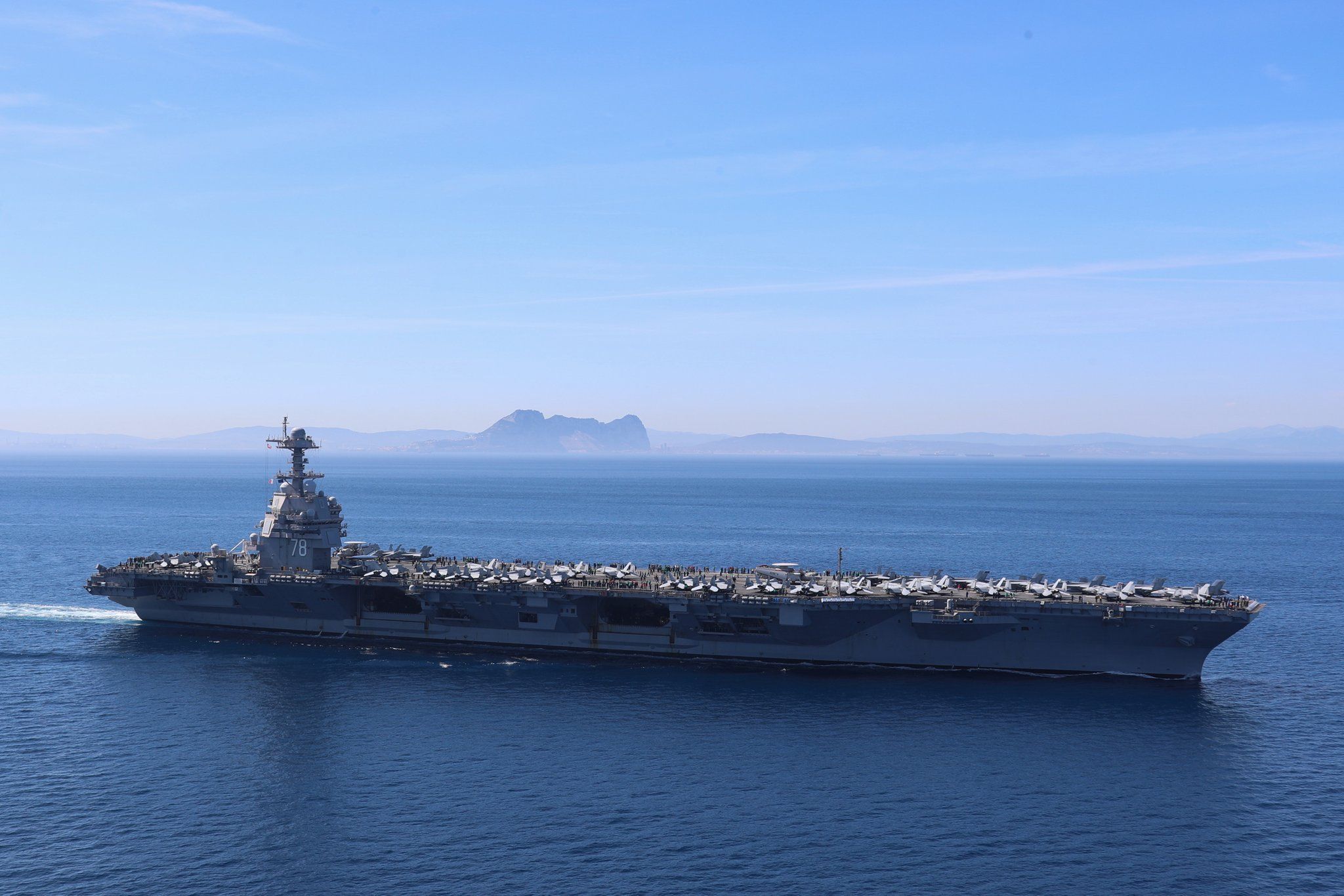Kewl military pic of the day
-
Interesting how the island superstructure is so far aft compared to previous designs.
-
For comparison. The *Enterprise * and the *Eisenhower *

-
I see the Nimitz class also pretty far back. It just looks funny to me.
-
Looking at other pictures of the Ford, the island doesn't look as far aft as in the first picture, although it is clearly in a different location.

Gerald R. Ford is intended to be the first of a class of aircraft carriers that offer significant performance improvements over the previous Nimitz class. Gerald R. Ford is equipped with an AN/SPY-3 and AN/SPY-4 active electronically scanned array multi-function, multi-band radar,[63] and an island that is shorter in length and 20 feet (6.1 m) taller than that of the Nimitz class; it is set 140 feet (43 m) farther aft and 3 feet (0.91 m) closer to the edge of the ship.
I love how the specification say speed is "in excess of 30 knots."
PBS had a series about 10 years ago about life on a carrier. They showed some high-speed maneuvers, including some turns at speed. The entire deck was tilted a significant amount.
Here's the Ford making such a turn.
Link to videoIn the comments:
"As a destroyerman, it was a well-known fact that they could easily out run us if they chose to."
-
Interesting how the island superstructure is so far aft compared to previous designs.
@bachophile said in Kewl military pic of the day:
Interesting how the island superstructure is so far aft compared to previous designs.
One of the first things I noticed. I didn't know and I try to keep up with this stuff.
But like you said, kewl pic.

-
What would be the design reason for placing it further to the back?
-
What would be the design reason for placing it further to the back?
The reason that extra real estate in front of the island superstructure is so valuable, said Lanzilotta, is because it allows more room for aircraft to line up and prepare to launch.
The Navy uses “cyclic flight operations to continue to generate sorties over many hours a day,” said Lanzilotta, speaking to The War Zone after wrapping up a panel on the history of aircraft carriers at the Sea Air Space symposium. “And we do that by launching the cycle and then recovering that cycle.”
It’s a very synchronous effort and if an aircraft has an equipment malfunction or some other problem that interferes with its ability to take off, such a pause on older carriers, where the islands are closer to the bow, can impede the process.
“If you're a little bit late, you need to troubleshoot, maybe it's just reset a system that's built into the aircraft, you reset the system and off you go, you can taxi to the catapult,” said Lanzilotta. “If you're parked after the island on the older ships, you need a break in the recovery in order to do that because everything we do happens very, very quickly, very efficiently.” -
Interesting
-
Interesting stuff!!
Only 7 countries have aircraft carriers. Not so many.
-
@Jolly I dont know. Just counted from this article
https://worldpopulationreview.com/country-rankings/aircraft-carriers-by-country
-
@Jolly I dont know. Just counted from this article
https://worldpopulationreview.com/country-rankings/aircraft-carriers-by-country
@taiwan_girl said in Kewl military pic of the day:
@Jolly I dont know. Just counted from this article
https://worldpopulationreview.com/country-rankings/aircraft-carriers-by-country
There are lies, damn lies and then there are statistics. The Russians couldn't get their carrier to work, if they towed it out of the dockyards with a tugboat. The two Chinese carriers are propaganda pieces, with their pilots routinely having to land and take-off from land-based fields. Plus, the Chinese have no carrier based plane analogous to the Hawkeye, leaving their carrier deaf, dumb and blind. Consensus is that the Chinese won't have a fully operational carrier for 5-10 years. The Italian carriers only operate S/TVOL aircraft, formerly Harriers, now F-35B on the newest and still only Harriers on the Garibaldi. Interestingly enough, the older Italian carrier was built as a fly-through carrier and could operate non-S/TVOL aircraft, but that's a different skill set.
Your list leaves out the two Queen Elizabeth type carriers fielded by the UK. Those carriers were built as fly-through designs, but the initial projected aircraft (F-35C) need a catapult system and that was deemed too expensive. Therefore, the UK carriers field only F-35B variants.
France operates the only nuclear-powered, Catabar system carrier outside of the U.S. As such, the Charles de Gaulle is the only foreign carrier to ever have F-18 Super Hornets operate off of her deck.
The U.S, operates 11 fly-though carriers, which can handle the full complement of U.S. Navy aircraft. In fact, the Navy even experimented at one time, launching C-130's off of a carrier deck (successfully).
The U.S. Navy also is building the new Lightning class of carriers, amphibious assault ships designed for the Marine Corps. They will operate all elements of Marine aviation. The U.S.S. Tripoli:

So in essence, two countries have fully operational catapult or rocket assisted (Russian system) carriers - the Americans (11) and the French (1). While the S/TVOL carriers ain't chicken feed, they cannot sustain the operational capability the fly-though carriers can. The Gerald R. Ford can surge 270 sorties/day with 90 aircraft and sustain 160 sorties/day for 30+ days.
